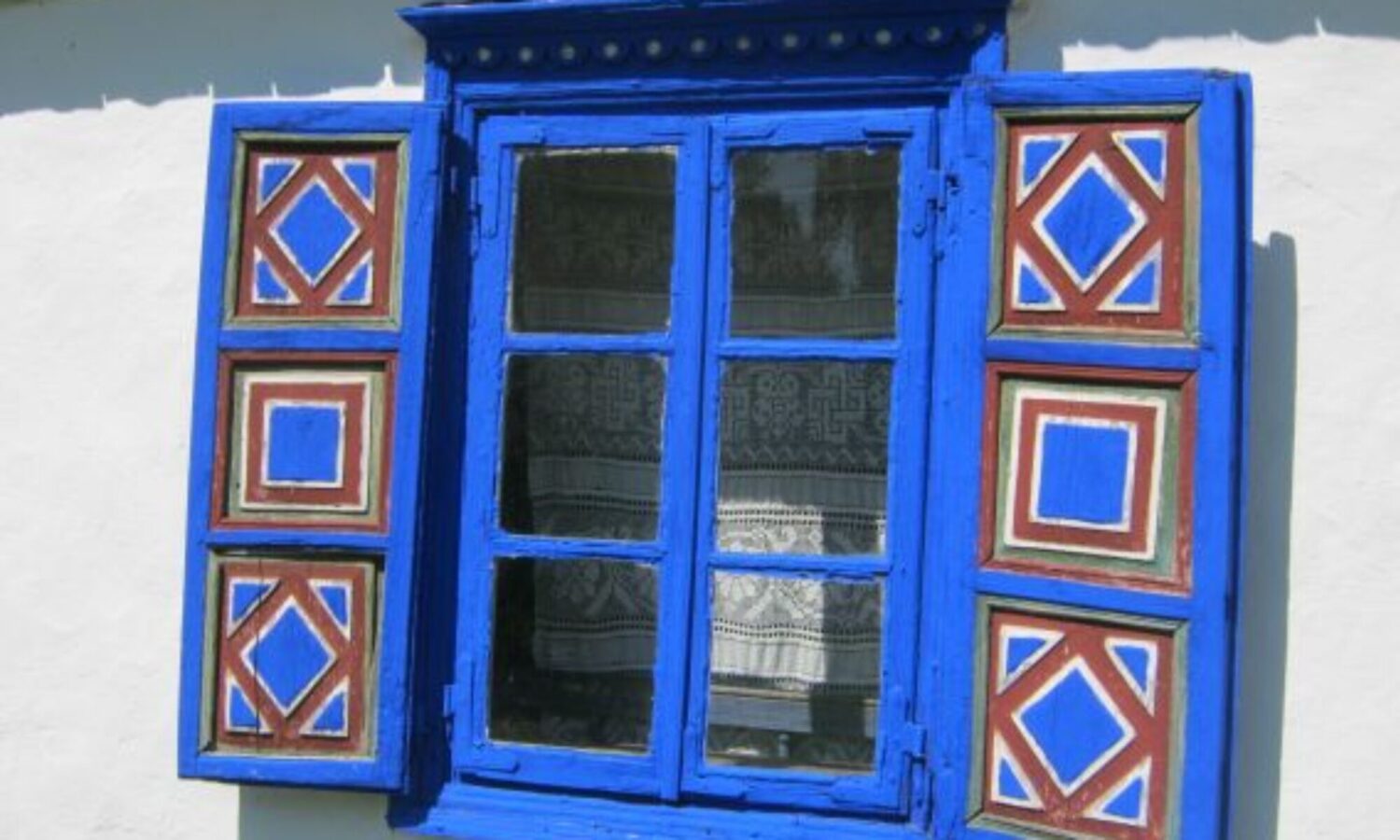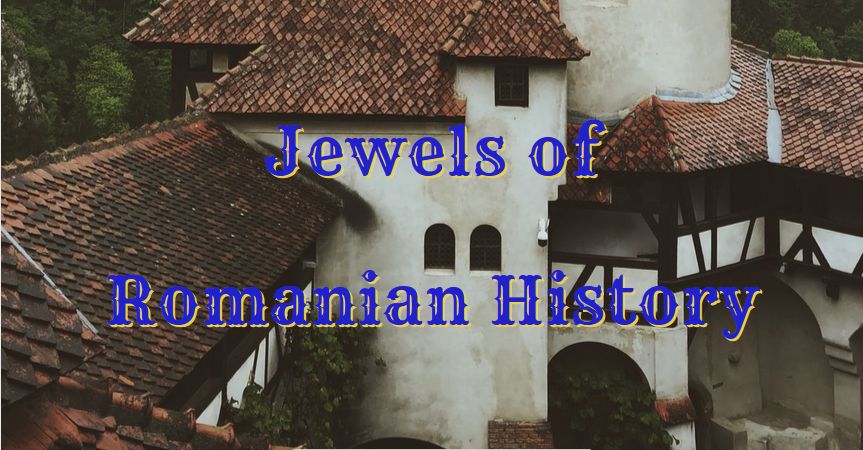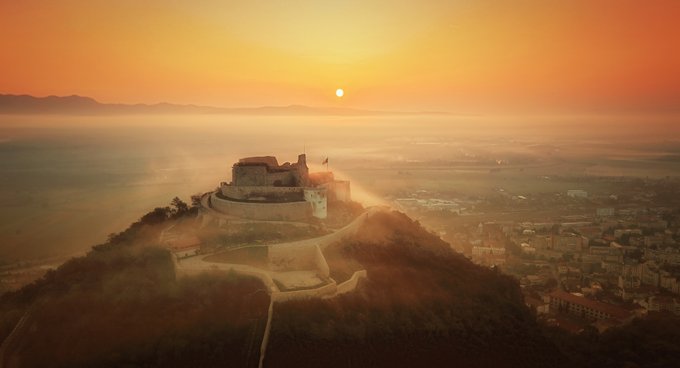The jewels of Romanian history and travel, of any historical event and travel location, are the details that tend to fall between the chunks that make it in the history books, the sparks that matter, the ones we will gladly remember.
Romania is a unique, marvelous country with such varied landscapes, from majestic Carpathian Mountains to the white beaches of the Black Sea with silky sands; from a charming countryside to medieval towns, majestic, mysterious castles, wooden churches, and sweet music.
Before reading further, you might like to read my thoughts on other jewels of Romanian history and travel. Jump to:
- Travel through Romania
- On the history of Romania
- Romanian traditions and art
- A few snippets from Romania’s history
TRAVEL THROUGH ROMANIA:
Castles and Fortresses of Romania:
Exploring Romania, Top Medieval Movie Locations: Corvin Castle
An Ancient Door, Corvin Castle, Romania
Corvin Castle, Kinda Historical Doors
Corvin Castle, Window Slits and Telling Rocks, 100-Word Story
Kinda Old, Corvin Castle and a Story
A Story for the Oldest Door of Corvin Castle Transylvania
Exploring Romania’s Top Movie Locations: Peles Castle
Legends from Peles Castle and a Mysterious Door
Târgoviște, a Royal Palace in History
Bran Castle, a Historical Door Kept under Key for Centuries
Bran Castle and a Secret Tunnel down a Well
Bran Castle, Time Tunnel Explained, All You Need to Know
Time Stands Still in Romania and Taking Kindly to It (near Bran Pass)
A Humorous Legend from Țara Bârsei and Bran Castle Photos
Bran Castle, Exciting History and a Covid-19 Vaccine
Bran Castle’s Unique Door Knocker and a Crocus Legend
Travel to Râșnov Fortress, Romania
Travelling from Mountain top to Sea side, Doors and Stories
Rucăr Bran Corridor, Romantic, Beautiful, Charming – Historical Uphill
To Marvel at the Medieval Towers of Sighisoara Fortress
Looking UP: Street Lamps from Brasov and Fagaras Castle, Romania, part2
The Iron Maiden of Fagaras Castle
Travel to Făgăraș Fortress, Romania
Oratea Fortress, Echoes of the 13th Century, 100-Word Story
Brancoveanu Monastery, Sambata de Sus
Wooden Doors of a Medieval Chapel, Snagov Monastery
Through the Maramures and the Szeklers Gates, in Dreamland
Where to: Huet Square in Medieval Sibiu, Old Europe
Old Targului Street Sibiu, Day-Night Walk Photos and a Medieval Story
Goldsmiths Square Sibiu, Contemporary Photos, the Story of a Medieval Mongol Invasion
The Secret Shoemakers Passage, Pasajul Pantofarilor, Sibiu
A Studded Gothic Door and a Medieval Door Lock, Evangelical Church Sibiu
The Medieval and Legendary Small Square of Sibiu
Gothic and Whimsy, the Pharmacy Museum of Sibiu
Being Bold, Climbing A Rare Medieval Council Tower, Bewitching Sibiu
Terrific Apprentices’ House, Casa Calfelor Sibiu, Unlocking Its Secrets
The Boyar, with the Dagger, in a Square of Sibiu, or the Assassination of Mihnea cel Rău
On Romanian Cities and on Travel:
Travel to Romania via 25 Amazing Photos
A Train Journey through Snow, in Romania
Bucharest or Paris? Travel Photography and a Guessing Game
Doors from Bucharest or Paris? Guess!
Classical or Innovative, Glass and Brick in Bucharest
When Doors Are Art, in Bucharest
Why You Must Have Transylvania on Your Holiday Destinations List
Looking at the Sea (in Mamaia)
Silent Sunday, Light and Shadows on the Beach
Dreamy Blues, Authentic 1885 Tulcea House by the Black Sea
Looking UP: Street Lamps from Bucharest, Romania
Angela Gheorghiu performs Tatăl Nostru in a deserted Bucharest
Myths, Legends, and Stories from Bistrita, in Dreamland
The Church Door, a Short Story for Thursday Doors – Brasov
Doors of Brașov, Transylvania, Romania
Brasov, where Doors hide Surprises
The Golden Gate Portal of Black Church, Brasov, and a Story
Statues on a Roof and Magnificent 16th Century Houses in Brasov
Oldest and Tiniest, a Story for the Wooden Church of Doba, 16th century
The Wooden Church from Bicaz, Maramures, Romania
The Wooden Church from Arduzel, Maramures, Romania
Mysterious, Mythical, Medieval, Cârța Cistercian Abbey
Under the Sign of the Four Turrets, 100-word Story in Sibiu
Wooden Doors and Symbols, Village Museum Bucharest
A Tall House, a Banknote, and a Legend on Fire for Thursday Doors – Village Museum
The Legend of Putna Monastery
Architectural Jewels from the History of (Medieval) Romania:
A Journey through the Medieval City of Sighisoara, Romania
Medieval Sighisoara and the House where Vlad the Impaler was Born
Medieval Horns, a Dark Staircase, and Amazing Photos from Sighisoara
A Clock in a Tower at Sighisoara Fortress #Im4Ro
Archaic, Happy Blue Windows and Whimsy Hills from Romania
A House with Blue-Framed Windows from Transylvania
Witchcraft and Witch-Hunting in Transylvania, a Historical Journey
ON THE HISTORY OF ROMANIA:
On Vlad Tepes, Vlad the Impaler, Dracula III:
Vlad the Impaler’s Medieval Feast. Wine or Blood?
Mircea the Elder and Vlad the Impaler, Family and Historical Ties
Vlad Tepes, Bucharest, and a Medieval Curse out of Context
A New Literary Comparison, Bram Stoker’s Dracula – Vlad the Impaler
A Timeline of Romanian History, especially Transylvania:
Legend of Rasinari, Resin City and a Roman Soldier’s Payslip
Stories and History of Transylvania, Prehistory to Roman Dacia
Transylvania during the Roman Dacia and until 4th century AD
Wish I May, Wish I Might, Own Transylvania by Tonight (on the Hungarian conquest of Transylvania)
Transylvania, Romania, Its Origin and Etymology
Stories and History of Transylvania, the Middle Ages
JEWELS OF ROMANIAN TRADITIONS and ART:
4 Romanian Myths between Culture, History and the Sacred
The Holy Fire of Easter
Easter in Romania, Scents, Sights, Sounds
Romanian Drob, a Lamb-Terrine for Easter, its History, Symbology and Traditional Recipe
Sumedru’s Sacred Fires, the Beginning of Pastoral Winter
Romania, Incredible Winter Traditions
Storytime, An Unexpected Christmas Gift – Un Dar Neaşteptat de Crăciun
A Midsummer’s Night, from Magic Sânzienele to Machiavelli’s Dream
Midsummer Night in Romania, Sanzienele or Dragaica
The Old Bear in Romanian Mythology and Folklore
Enchanting Solomonars, Romanian Cloud-Chaser Sorcerers
Garlic, Superstitions on Pentecost, Rusalii
Old Romanian War Carols
Astonishing Women from Romania’s Past Inspired me a Woman Writer
Words by Patricia Furstenberg on Enescu ‘s Suite Ancienne
Infinity Column, Between Art and Symbolism
When Geometry is Art in Romanian Folk Creations
The Sun, Rope, Horse and Tree of Life in Romanian Wood Folk Art
Symbolism in Romanian Folk Pottery
Mary and Constantin Rosetti, a Love Like None Other
The Romanian Blouse, IA, its Story, History, and Symbology
Martisor, 1 March, Celebrating Old and New, Change and Hope
Revolution Is Poetry for Romania’s National Day
A FEW SNIPPETS FROM ROMANIA’S HISTORY:
Archeologists consider the clay tablets discovered in the village of Tartaria, Romania, as the earliest known form of writing in the world. Dating from 5300 BC.

Danubius was considered to be the great God of Danube river. To earn his favors, the Dacians would bring him offerings at the river’s port of entry into their territory, Dacia (now Romania) Here, great Danubius is shown on Trajan’s Column.
Speaking of Dacians… 3 000 BC the Daci, Dacians occupied the area we know today as Transylvania, while the Getae occupied the south and west of today’s Romania. Some say they were parts of the Thracian tribes, but it is not so if we take a close look at the words we inherited from them (Geto-Dacs, Dacians) as well as some proper names and the fact that they recognsed only one god, Zalmoxis.

Of course, with Daube spanning 1,770 miles from Germany’s Black Forest to the coast of Romania, Danubius will have many names and faces.
A spear throw distance from the Black Sea: Histria / Istria, Dobruja, #Romania
— Pat Furstenberg, Author✒🏰 #Im4Ro 🔛 bit.ly/Im4Ro (@PatFurstenberg) January 22, 2022
First a Greek colony, 650BC
Then #Roman, till ~ 300AD (Moesia Inferior)
Under Dacian King Burebista too.#RomanSiteSaturday #Im4Ro #romanian #archeology pic.twitter.com/RcyhOGLgqx
When Romans, under Trajan, invaded Dacia (now Romania), Trajan’s eye was caught by Dochia, a Dac princess. She asked the gods to remain in her homeland no matter what and was instantly turned to stone.
Falx vs Gladius, Dáoi vs Romans Translated in Romanian

Using monsters as an advantage.
Dacians, Romanian’s ancestors, had a battle flag made of a wolf’s head on a serpent body. When wind blew it produced a howl, wolfish sound, thus intimidating the adversary.


Human sacrifices were brought to Zamolxis, ruler of underworld in Romania. Three spears were held upright while a messenger, swung by legs and arms, was thrown into them. If he died, Zamolxis was benevolent. If not, the emissary was deemed sinful,a new one chosen.
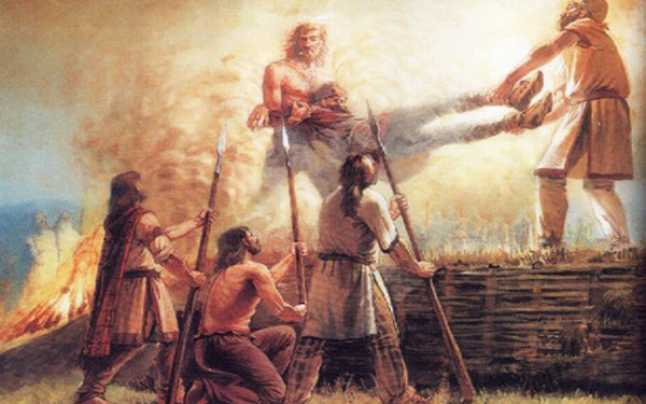
A Roman festival took place on 25 December ~271AD at Porolissum Fortress, a Roman Castra located on Pomat Magura hill, near Moigrad Porolissum village, Salaj County, near Cluj.
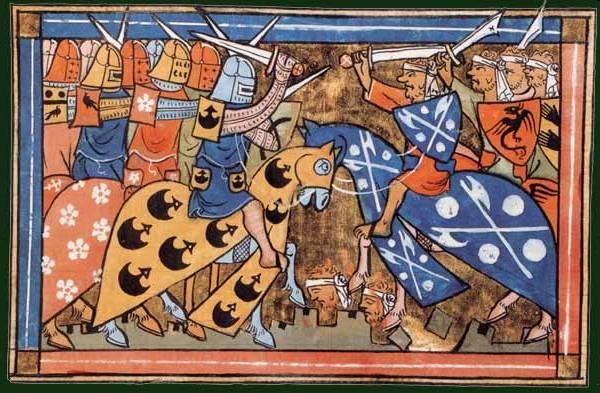
Jan 13, 1128 Pope Honorius II declared Knights Templar “Army of God”.
Based on this order, to defend Christianity King Sigismund of Luxembourg started, 300 years later, the Order of the Dragon of which Vlad the Impaler’s Father was a member, dub Dracula.
Love fortresses? Castles? The first mention of Fortress of Deva took place on this day in 1269, when Stephen V, King of Hungary and Duke of Transylvania mentioned “the royal castle of Deva”. This one goes on my wish list. (22 February 1269)

On 8 January 1392 it was first documented in Romania the job of a stolnic, the King’s seneschal responsible with his food and meals, and plenty of! We also hear of paharnic, King’s own cup-bearer & cellar master. Both positions filled by boyar aristocrats.
On my wish-list: a visit to Fortress Neamt, Moldavia, North-East of Romania, first mentioned in an official document on 2nd February 1395. This majestic stone castle saw four long centuries of anti-Ottoman battles & brave ruling, like that of Prince Petru I, Stefan cel Mare(Stefen the Great) and even a visit from Vlad Tepes (Vlad the Impaler).
A Vlad II Dracul (‘the Dragon’) coin struck circa 1445-1446.
Left: an eagle standing, head towards the right; cross above;
Right: a dragon advancing, its wings are spread.
Minted by Vlad Tepes’ father in the cellar of his Sighisoara home.

Legend says that a gold chalice was placed by a fountain near Targoviste Fortress, where Vlad the Impaler (Vlad Tepes, aka Dracula) ruled from, for all to quench their thirst with. None dare steal it. The day the cup was gone was the day all knew that Vlad was dead.
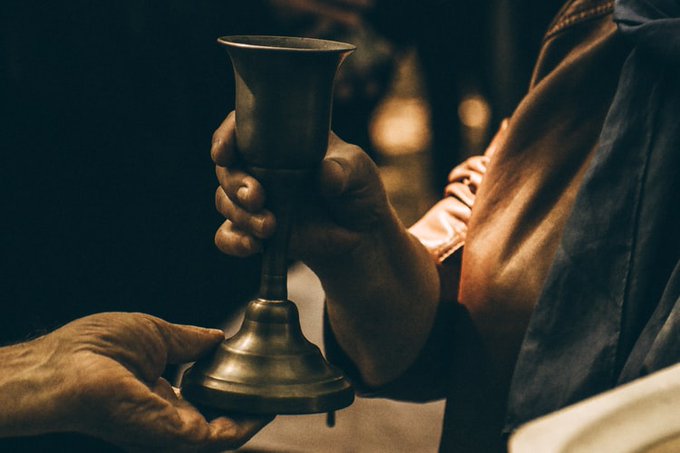
Vlad Tepes, aka Dracula, is often portrayed in movies as a cruel ruler fond of impaling. But this form of punishment dates back to 1700BC Babylonia, was also used in Egypt & later in the Holy Roman Empire.
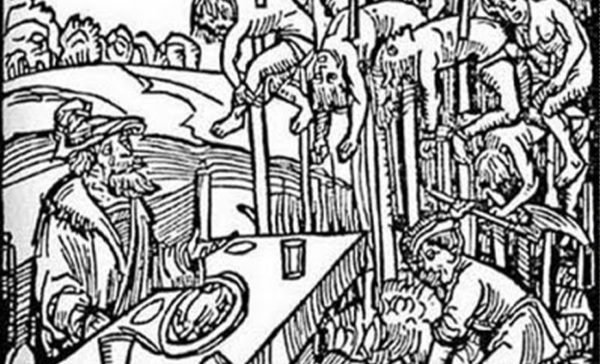
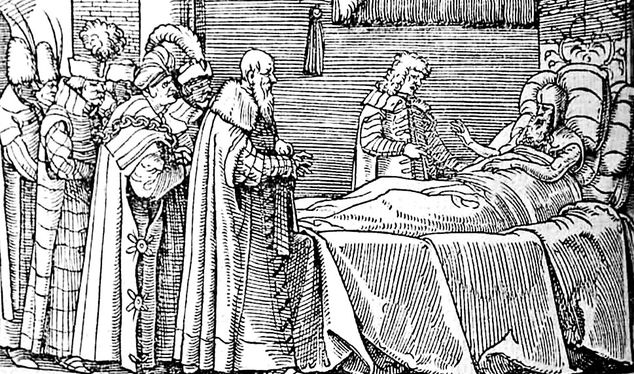
17 January 1468 – Skanderbeg (Gjergi Kastrioti), Albanian nobleman die. Just as Vlad the Impaler he was “educated” at the Ottoman court. Skanderbeg eventually became a great supported of Vlad Tepes & John Hunyadi in the 15th cent.Christian fight against Ottoman Empire.
On 10 January 1475, the battle of High Bridge (Batalia de la Podul Inalt) took place. Great planning (using territory & weather to their advantage) & a cunning attack helped Moldavian army under Stefan cel Mare, Stephen the Great, defeat yet another Turkish invasion.

“To the Hungarian Crown & all the countries where this letter will arrive, good health. We, Stephen King, ruler of Moldavia by the mercy of God, I bow with friendship to you all, to whom I write.” Stephen the Great on his victory against Ottomans, at High Bridge, 25 January 1475. today in history.
On January 12 1483, ELENA, daughter of Stephen the Great,Prince of Moldavia, married IVAN, son of Ivan the Terrible.
Stephen the Great & Vlad the Impaler were first cousins.

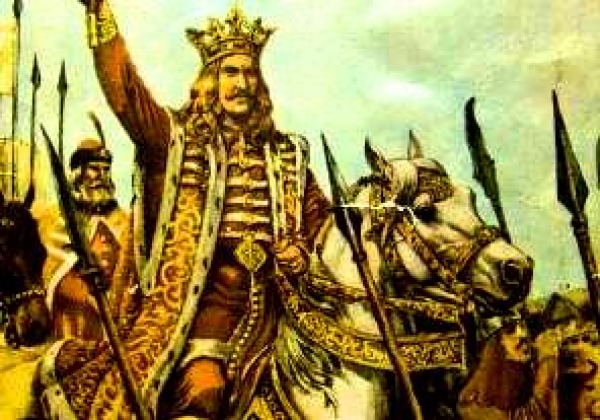
In was on 13 January 1527 on this day when Prince Stephen the Young of Moldavia (grandson of Stephen the Great) died at the hand of his wife Stana. You see, Stephen liked Ruxanda, Stana’s sister and the wife of his neighbor, a Wallachian Prince. Stephen declared war, lost and then settled for Stana who soon poisoned him…
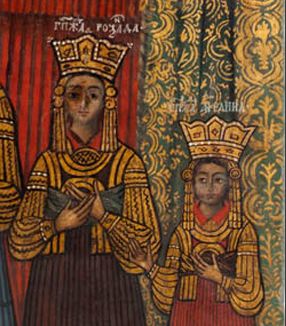
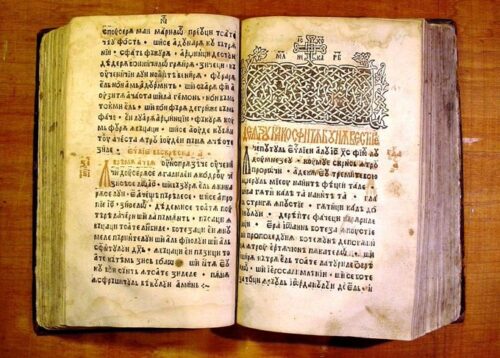
30 January in 1561 – Coresi finished printing the very first book in Romanian, Tetraevanghelul, the Four Gospels. The 265 pages took 9 months to print.
Karlowitz Treaty was signed on 26 January 1699. It ends Ottoman control in Central Europe.
Principality of Transylvania goes under rule of Austria.
Allegory showing Transylvania’s (left) Coat Of Arms rarely evoked in art.

Must know: first drama performed in Romanian language (as French was used before) took place on December 27th 1816 at Iassy: “Mirtil & Hloe” translated by Gheorghe Asachi who was also director, did decors, painted the curtain. Folk costumes were used.
It was in 1843 December 29 when the first Queen of unified Romania was born, Elisabeth, wife of King Carol I who built Peles Castle. Elisabeth of Romanians wrote poetry and stories under the pseudonym CarmenSylva.
Come 1848 and the French Revolution bursts in Paris, spreads over Europe, reaches Romania. ‘Liberté, égalité, fraternité‘ becomes ‘Dreptate, Frăție‘
Below in slideshow: Delacroix‘ allegorical painting of Liberty leading the People, a pyramidal composition: the base strewn with corpses, the victors & flag, its apex.
Also, Revolutionary Romania by C Rosenthal, a painting whose history became representative for the Romanian Revolution of 1848.
Happy to remember the birth of Mihai Eminescu (born 1850), Romania’s foremost poet, writer, journalist – and the reason behind Romania’s Cultural Day also celebrated today, 14 January.
Although the world would call me free
Each year the more her slave am I,
For in her very way to be
There’s I don’t know what, I don’t know why.Already from the day we met
Was my freedom mortal shot ?
She’s but a girl as they, and yet
There’s something more, I don’t know what.No matter what we speak, or do,
The moments in sweet silence fly,
For somehow there is music too
When she is mute, I don’t know why.So likely to my dying day
English version by Corneliu M. Popescu
To follow her will be my lot,
For in her sweet and candid way
There’s I don’t know why, I don’t know what.


Maria Cuțarida-Crătunescu, born 10 February 1857, was the first Female Doctor in Romania. She was a Doctor in Medicine, studied at University of Montpellier where shr specialized in ‘diseases of women and children’.
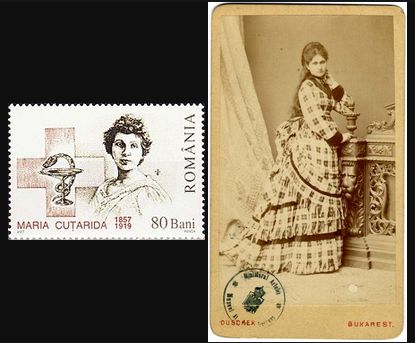
Imagine three principalities sharing the same culture and language, divided for centuries by foreign political agendas. It’s history.
On 23rd January 1859 Alexandru Ioan Cuza became Ruler of two of the Romanian Principalities, Moldova & Wallachia. This was the first step towards a whole Romania. “Traiasca Romania dodoloata” was later said during the Great Union of 1918.

Stuff stories are made of: first st tramway pulled by horses ran in Bucharest on December 28th 1872. It was painted yellow, and the driver wore a red suit.
Its route was: Calea Târgoviștei–Podul Mogoșoaiei–Teatrul Național–strada Biserica Enei–strada Academiei–strada Colței–Piața Sfântu Gheorghe–Calea Moșilor
Happy to celebrate Brancusi Day on 10 February. Constantin Brancusi was born in 1876 in Romania. He was known as “the father of modern #sculpture.” He was also a painter, architect and a master of “abstract art.” Best know for: Column of Infinity Kiss, Miss Pogany, Gate of the Kiss
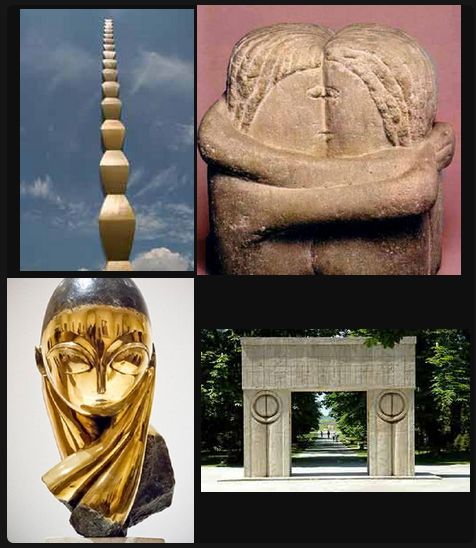
What I like about being a grownup is that history makes a lot more sense. It was on 21st February 1907 that a spark from Moldavia, at the very North of Romania, spread like fire to South-West: the Romanian Peasants’ revolt against inequity of land ownership. Revolta de la 1907.

It was on 5 January 1909 that 21 canon blasts welcomed the birth of Princess Ileana, youngest sister of King Carol II of Romania. She cared for wounded soldiers during WW2 and opened the ‘Queen’s Heart’ hospital at Bran. Forced to exile, she founded Monastery of Transfiguration in USA and later became a nun.
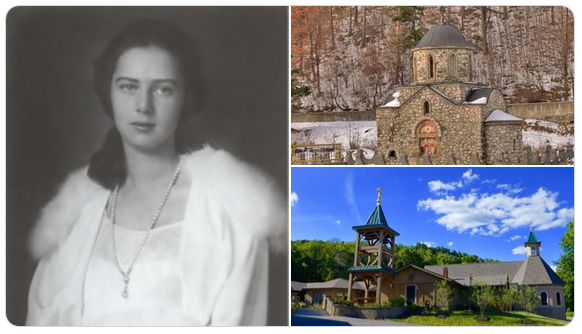

It was 4 January in 1926 that, due to King Carol II tumultuous personal life, his five years old son Mihai ruled Romania as King Mihai I.
I must have walked hundreds of times past The Palace of the National Military Circle, also known as the Officers’ Circle Palace – inaugurated almost a century ago, on 4 February 1923 by King Ferdinand I of Romania and Queen Mary.
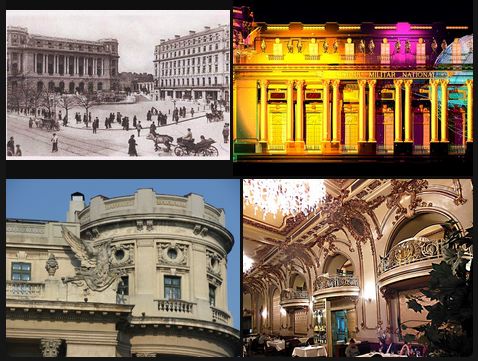
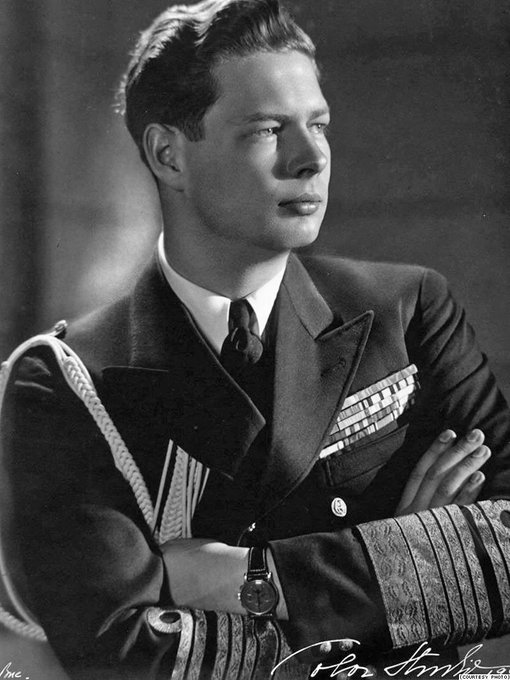
Romanians, on 30 December, remember the communist coup d’etat of 1947 and the forced abdication of King Mihai I as well as his rushed departure from #Romania, only to return on 25 December 1990.
Peles Castle was the ‘cradle of the dynasty, cradle of the nation’.
I plan on updating this page regularly, so do return for more jewels of Romanian history and travel.

